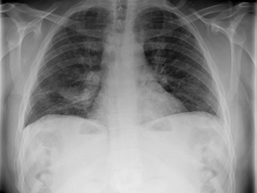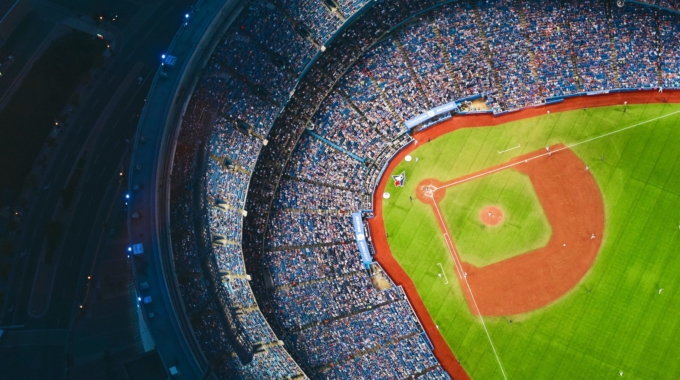
Using AI to Make People Smarter
With advances in artificial intelligence impacting every industry from healthcare to retail, it’s no wonder people are scared. After all, these pesky machines can already perform a great many tasks better than us humans and it’s only going to get worse. I’m not just talking about replacing mindless busywork like sorting mail and processing tax returns – I’m talking about AI systems taking on complex jobs like forecasting financial markets, diagnosing medical patients, even making optimized hiring decisions, and doing it all better than highly trained humans.
Consider the field of radiology. To become a practicing radiologist in the US, an aspiring doctor must devote 4 years to undergraduate education, another 4 years to medical school and a final 4 years to a radiology residency program. That’s 12 long years to learn what it takes to review and diagnose medical images, from x-rays and CT scans, to ultrasounds and MRIs. You would think people who go through this grueling regimen would have job security and yet I’ve spoken to radiologists who are worried that AI is going to replace their profession.
Is this fear justified? Unfortunately, it is. AI technologies have made major strides in the field of radiology over the last few years, rapidly rivaling and even exceeding the diagnostic accuracy of human radiologists across a variety of tasks. For example, AI researchers at Stanford University announced recently that their CheX-Net system can automatically detect pneumonia in chest x-rays with diagnostic accuracy that exceeds human doctors. Considering that chest x-rays are the most common radiological procedure in the world, with over 2 billion performed each year, automating this one procedure alone could impact job security.

Chest X-Ray used in Diagnostic Testing
This raises a terrifying question – if highly trained doctors are at risk of being replaced by AI systems, what does that mean for the rest of us? Are we all destined to lose our jobs to machines? Not necessarily, but to avoid this unfortunate future we need to make significant changes in how AI systems are conceived and developed. Instead of building AI technologies that replicate and replace human abilities, as is the focus of most current work in the field of machine learning, researchers should put far more energy into developing AI technologies that build upon human intelligence, working to leverage and amplify our unique human abilities rather than pushing to replace them.
Can this approach keep human intelligence relevant in a world increasingly saturated with AI systems?
I firmly believe that it can. In fact, a recent study performed by my company, Unanimous AI, in collaboration with Stanford University Medical School, demonstrated the power of this approach by targeting the same radiology example described above – diagnosing chest x-rays for the presence of pneumonia. The research team assembled and tested a unique AI system that amplified the intelligence of real doctors in real-time, enabling human radiologists to significantly outperform the best machines in the world. The study showed that by combining human doctors with AI technology, we could achieve 37% more accurate diagnoses than even the highly impressive CheX-Net system described above.
How did we achieve this? By using AI to amplify human expertise rather than replace it. The system we created connects small groups of doctors into “networked intelligent systems” that leverage their knowledge, wisdom, insights, and intuitions in real-time, and uses AI technologies to combine their contributions into a unified and optimized output. In layman’s terms, we built a medical “hive mind” that combined humans and machines. And it works, generating significantly more accurate diagnoses than the best AI software alone.
That’s where Swarm AI comes in. It enables distributed groups of people, networked from anywhere in the world, to form real-time systems that can answer questions together in synchrony, converging on optimal decisions, forecasts, diagnoses, and assessments. The technology has been tested across a wide range of tasks, enabling human groups increase their accuracy in everything from predicting sporting events and forecasting financial markets, to assessing the viability of new marketing messages, product features, or business strategies. At a high level, this technology enables any networked human group to combine their insights in real-time, moderated by AI algorithms that turn the group into an “Artificial Expert.”
For example, a recent study conducted by researchers at Unanimous AI and Oxford University applied the power of Swarm AI to predicting the outcome of English Premier League football matches. The five-week test connected groups of sports fans into “hive minds” using an online platform (swarm.ai) and tasked them with predicting a set of 50 consecutive football matches. The predictions generated by the human-machine system was 31% more accurate than the individuals on their own, showing a significant amplification of intelligence. The system also outperformed the BBC’s machine-model known as “SAM” over those same 50 games, showing that by combining humans and machines, we can build systems that outperform both.
Of course, the range of applications for Swarm AI technologies extend far beyond predicting sports or diagnosing radiological images, to any problem where human knowledge, wisdom, insights, or intuition can be amplified. The technology has been used in everything from optimizing the set of features for new products, to predicting the box-office of movies, to generating political forecasts that significantly outperform traditional methods. The image below shows three snapshots of a Swarm AI system converging upon a prediction that Donald Trump would be the Republican nominee for US President in 2016 long before the polls or pundits were making that call:

The above examples reveal how human intellect, combined with AI technology, can create “super-intelligent systems” that harness the knowledge, wisdom, and insights of real people in real time, while still leveraging the power of AI algorithms. I believe this is a critical approach for ensuring that human abilities and sensibilities remain central in a world where AI technology will play an increasingly important role. And it’s not just our knowledge and expertise that we must ensure are not be replaced by AI software alone, but our values and morals. Swarm-based technologies help us achieve these goals, turning any human group into a super-intelligence without making it any less human. In the world of AI, it’s currently the best way I know to push for a “rise of the humans” rather than a rivalry of the machines.
Swarm AI
The core technology we used is called Artificial Swarm Intelligence (or Swarm AI®). It’s based on the biological principle of Swarm Intelligencein which natural species “think together” in systems to make more accurate decisions as a group than they could do on their own. Swarm Intelligence is the reason why birds flock, fish school, and bees swarm – they’re much smarter together than alone, leveraging their combined knowledge, instincts, and insights about their surroundings. This, of course, raises the all-important question – if birds and bees and fish can get smarter by forming “intelligent swarms,” why haven’t people been able to do it?
The problem has been, we humans did not evolve the natural ability to swarm, as we lack the innate mechanisms that other species use to form real-time closed-loop systems. Schooling fish detect vibrations propagating in the water around them. Flocking birds detect high-speed motions moving through the aerial formation. Swarming bees generate intricate body vibrations called a “waggle dance” that encodes information shared with the group. To enable people to form similar closed loop systems, we need an artificial system that emulates the swarming process, enabling human groups to converge on optimal decisions.
About Unanimous AI
Unanimous AI is a Silicon Valley company that has pioneered Swarm AI® technology, a new form of AI that combines real-time human insights and AI algorithms modeled after natural swarms. Unanimous has generated an impressive track record of predictions, forecasts and insights. The company’s technology has outperformed traditional AI systems and human experts in many high-profile challenges.
Unanimous works with corporate clients and leading organizations through its Swarm Insight® business intelligence service. Swarm Insight helps clients amplify the intelligence of consumer groups as well as amplify the intelligence of business teams to help make better decisions.
In 2018, Swarm AI was recognized as SXSW’s “Artificial Intelligence Innovation of the Year” and was described in a popular TED TALK here. For more about Unanimous A.I., visit http://unanimous.ai
Unanimous will be fielding swarms throughout 2018 to track the sentiment of the American public and to identify the trends and behaviors that are shaping our future. If you would like to stay informed of our research, sign up below.
Want to learn more about our Swarm AI technology? Check out our TED talk below…


